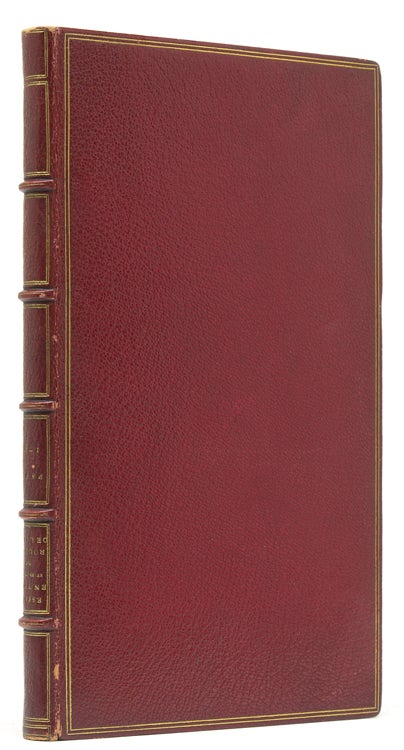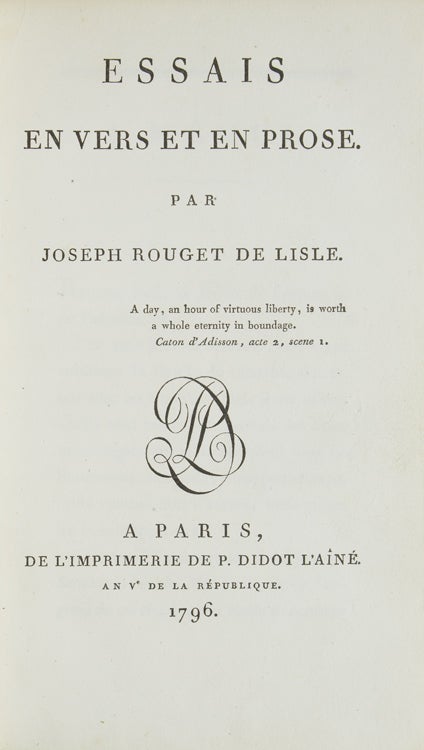“Aux armes, citoyens” — the first Printing of ‘La Marseillaise’ in a Book
Essais en vers et en prose.
Paris: Didot l’aîné, 1796.
Price: $8,500.00
About the item
First edition. [iv], 157, [1] + 5 pp engraved music. 1 vols. 8vo. “Aux armes, citoyens” — the first Printing of ‘La Marseillaise’ in a Book. Full crimson morocco, raised bands, gilt spine, marbled endpapers, gilt turn-ins, a.e.g., by Simier. Upper joint a little rubbed, else fine. James Fuld, World-Famous Music, p. 354; Constant Pierre, Les Hymnes et Chansons de la Revolution (Paris, 1904), p. 223.
Item #250015
First edition, containing the first authorized appearance in book form of "La Marseillaise.” The famous poem by Rouget de Lisle (1760-1836) appears at pp. 57-59 as “Le Chant des Combats, vulgairement L'Hyme des Marseillois. Aux Mânes de Sylvain Bailly. Premier Maire de Paris.”
La Marseillaise, now the French national anthem, and recognized worldwide as the quintessential call to revolution, “was originally written by a royalist officer as a patriotic song in support of the then French royal government which had declared war on April 20, 1792, against the Emperor Francis of Austria and King William II of Prussia. Subsequently, volunteers from Marseilles heard the song and joined in the storming in the Tuileries on Aug. 10, 1792. The song was thereafter quickly reprinted a great many times, usually under the title Marches des Marseillais or variant thereof” (Fuld).
“La Marseillaise est un hymne d'éveil et de résistance qui a valu pour les résistances qui ont suivi, qui vaut pour celles que nécessite notre temps, et qui vaudra pour les résistances futures.” — Edgar Morin
Fuld notes that the earliest printings of the famous anthem appeared either in broadside form or in periodicals, and all are extremely rare; this printing, its first appearance in a book, was officially authorized by the author and is highly desirable.
The copy, in a Simier binding, is particularly so: tipped-in is an Autograph Note signed by Rouget de Lisle, authorizing the payment of a debt “au citoyen de Buehr” (?), dated “le cinq thermidor, l’an 6” (i.e., July 24, 1797).



